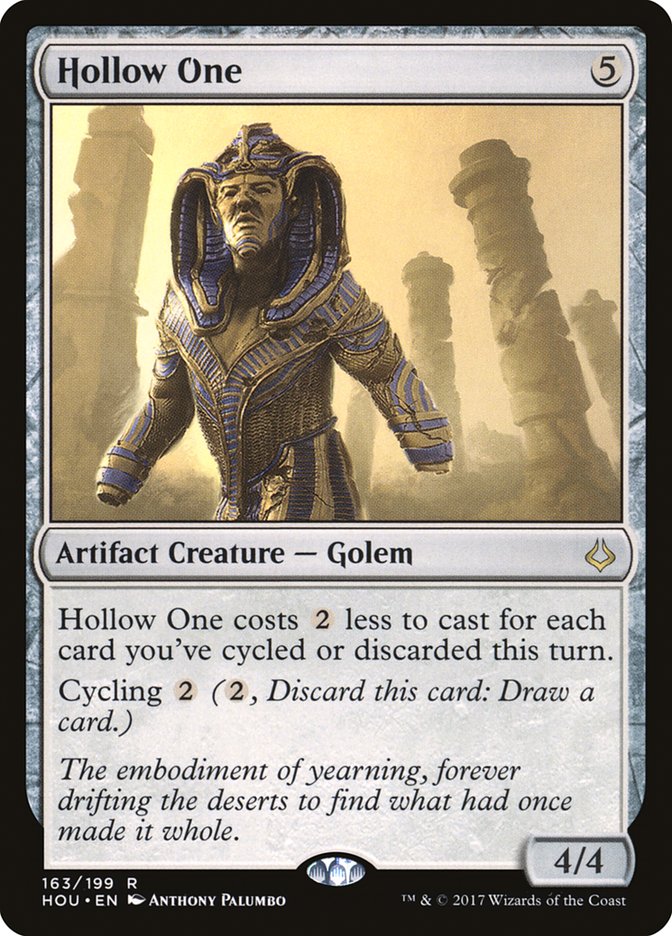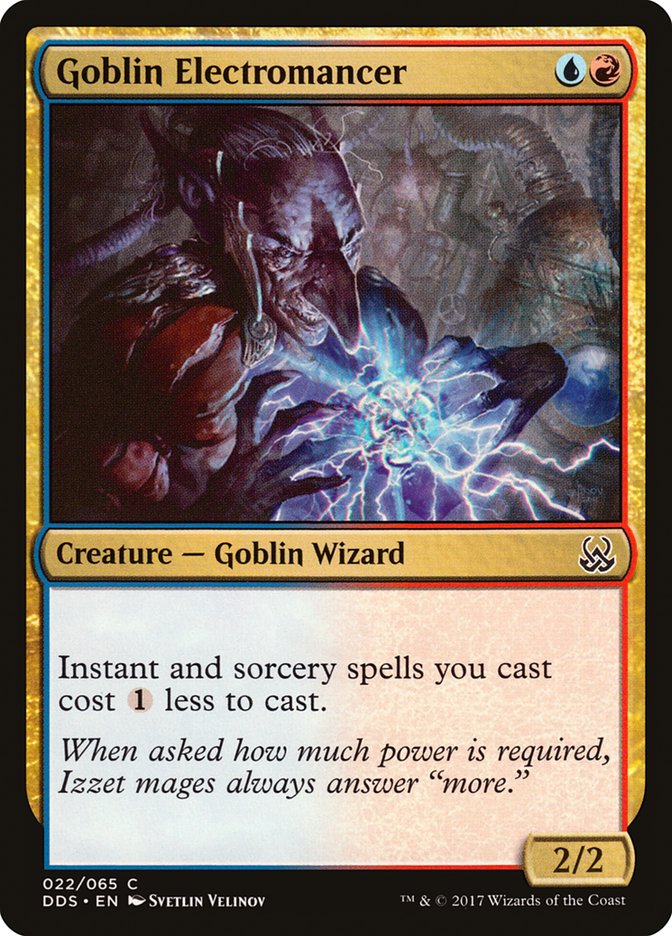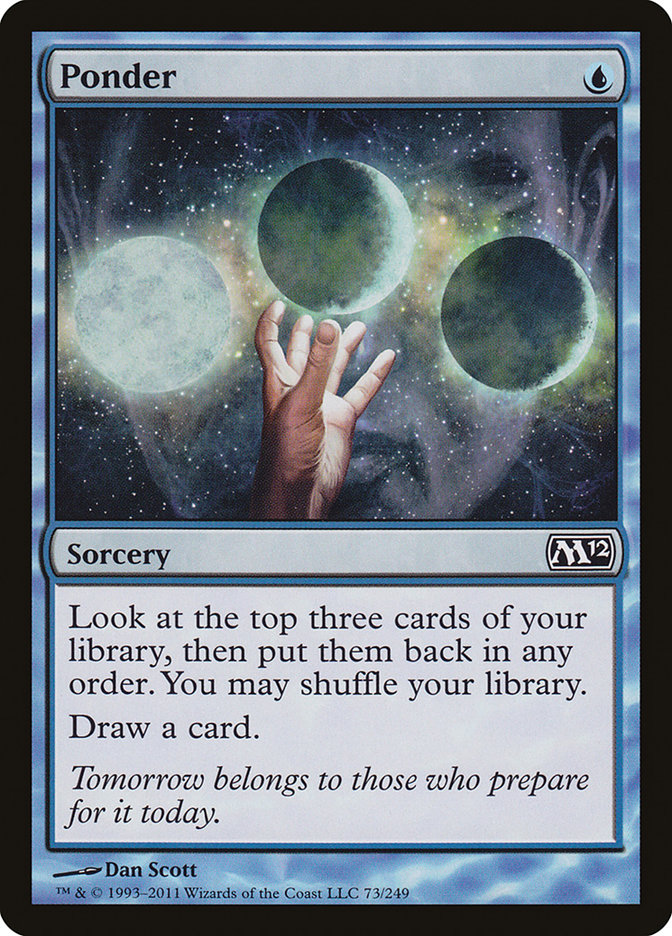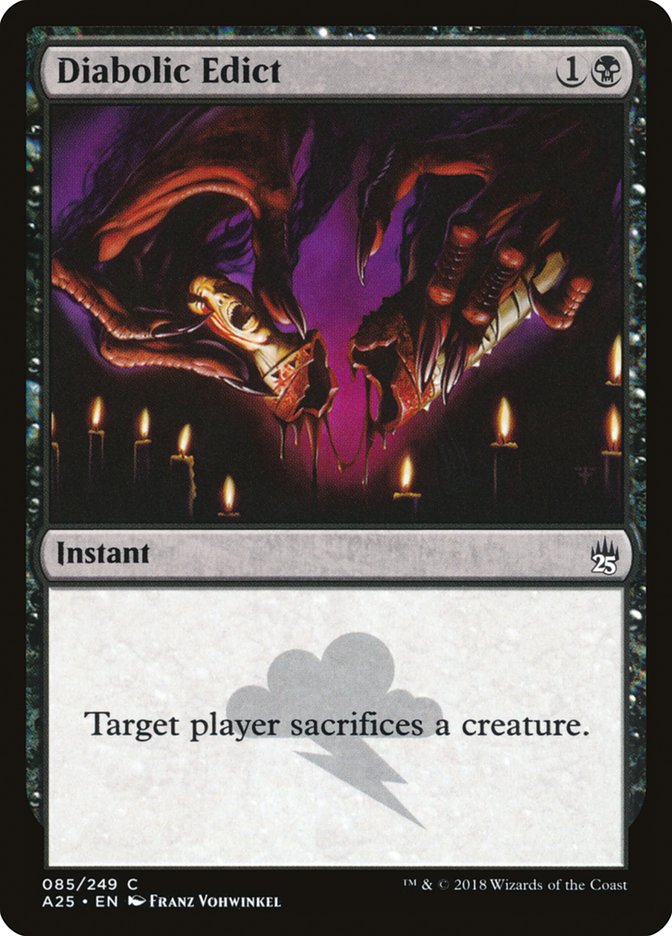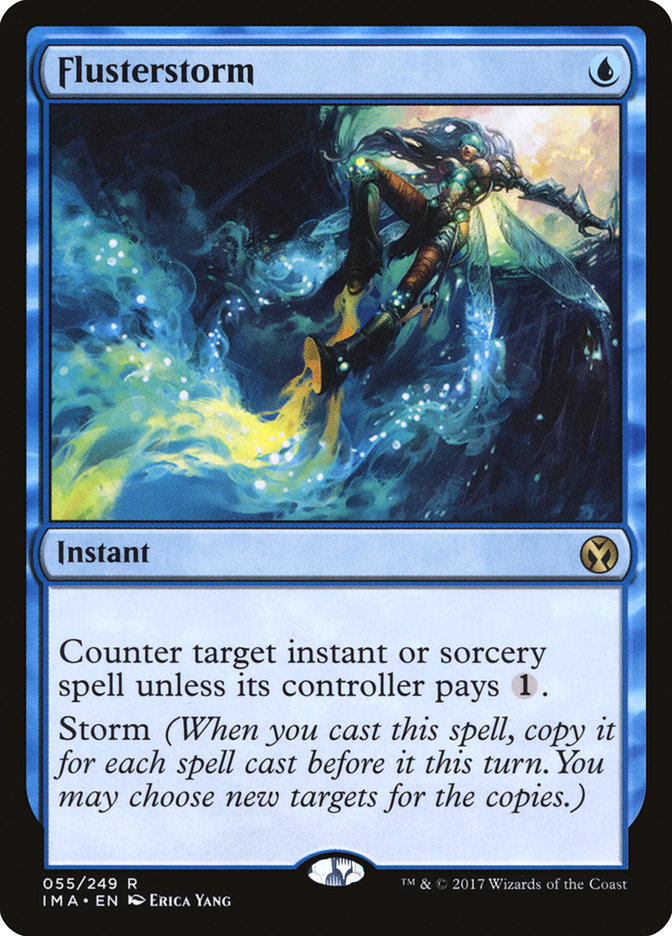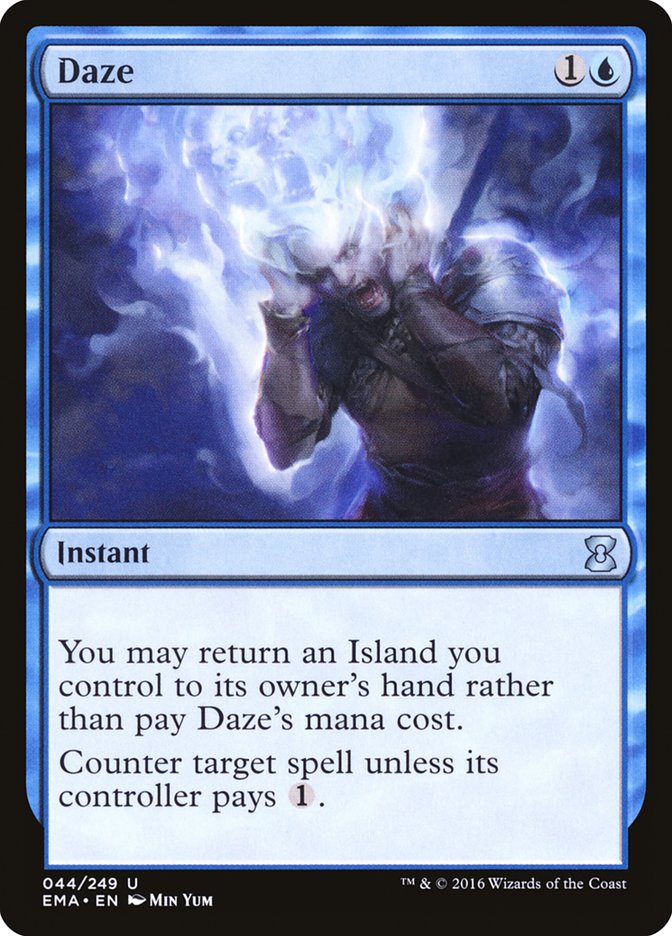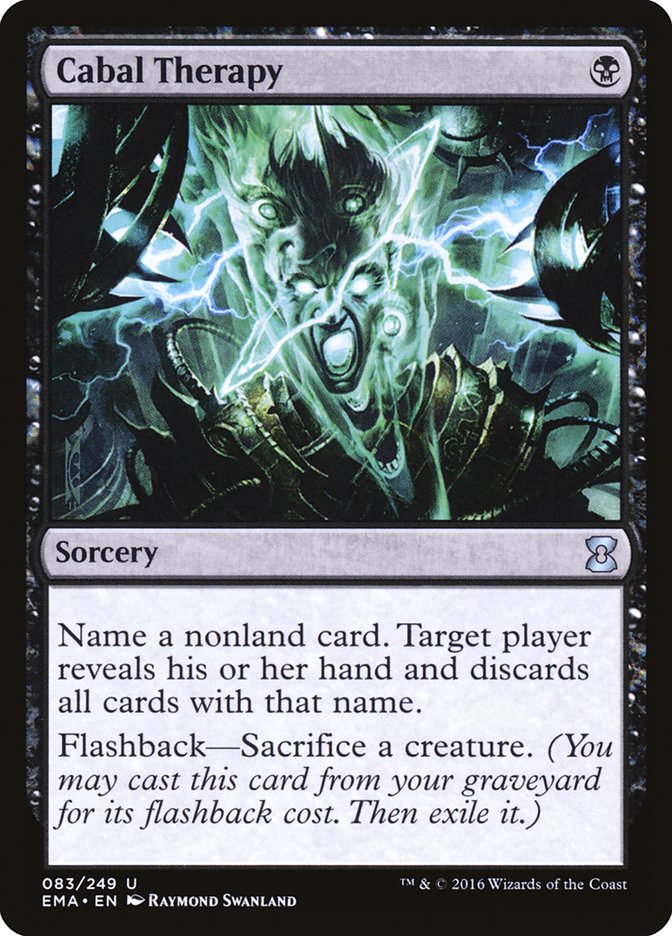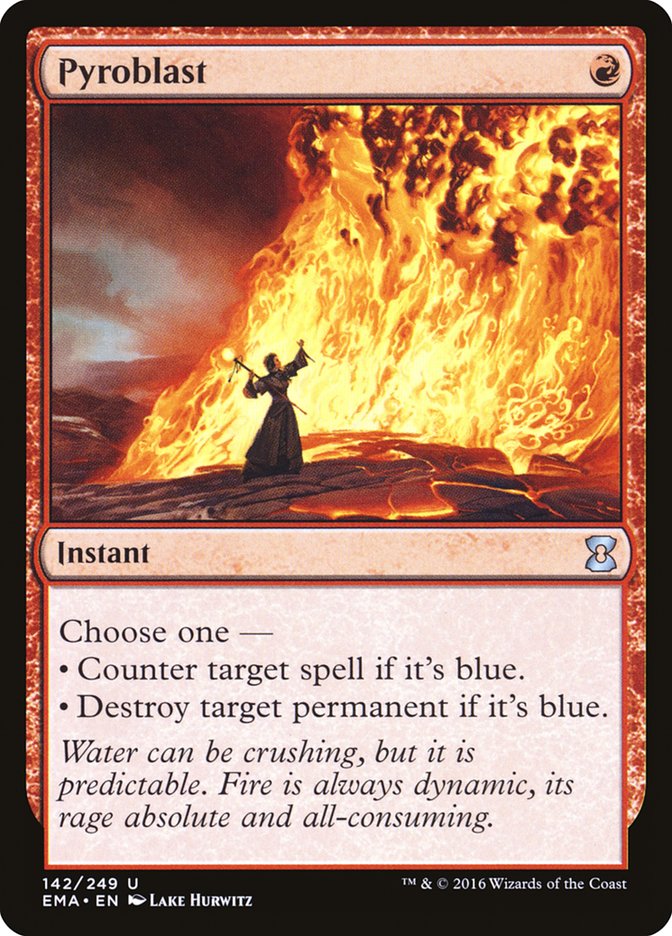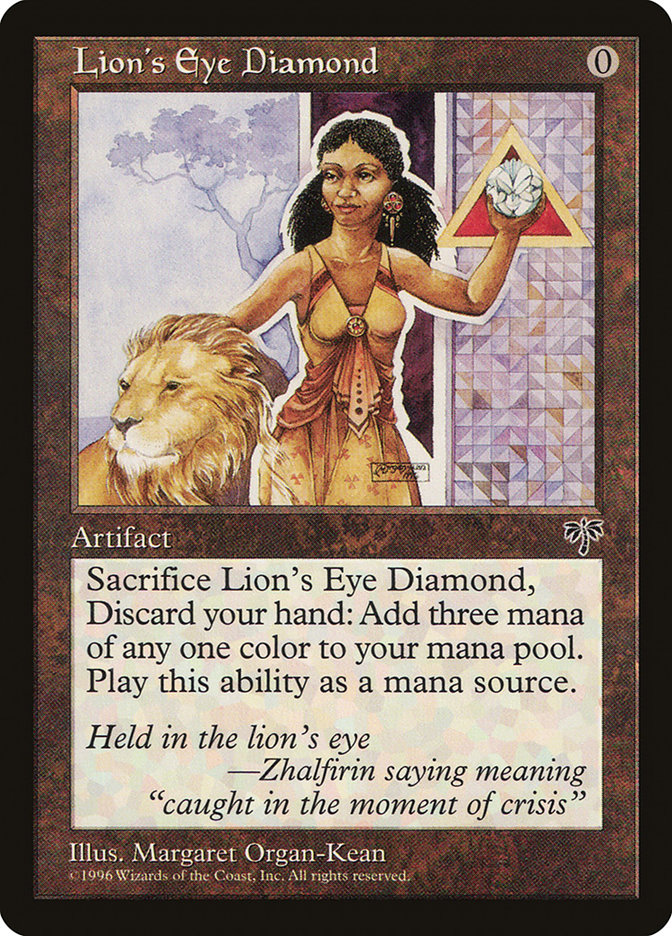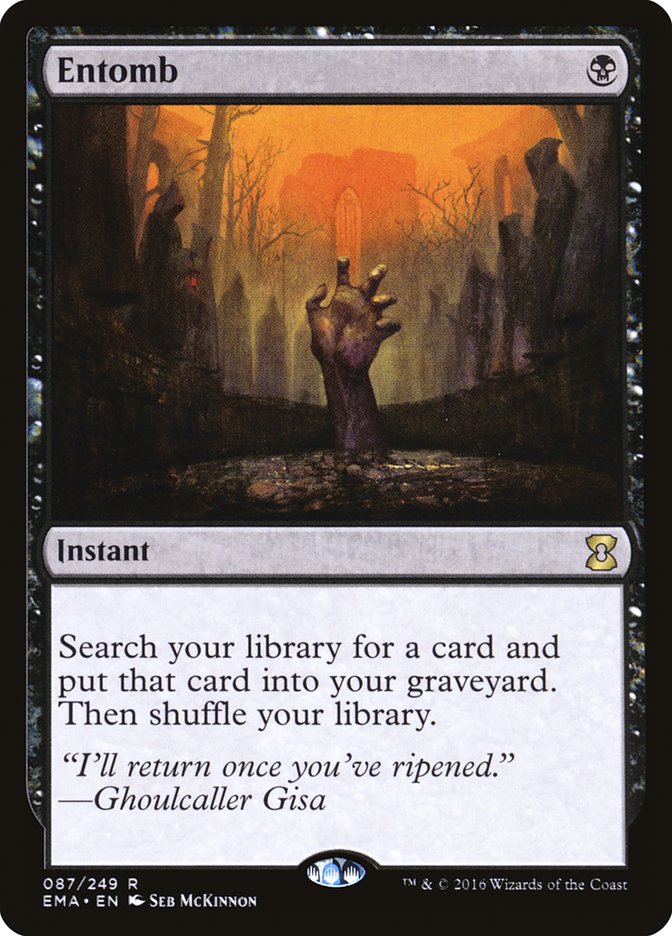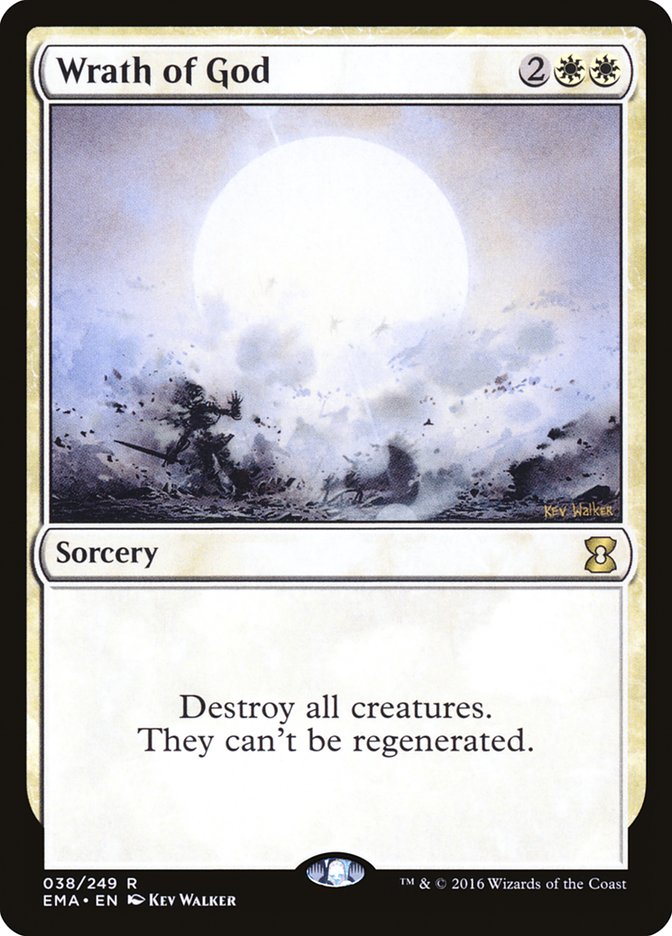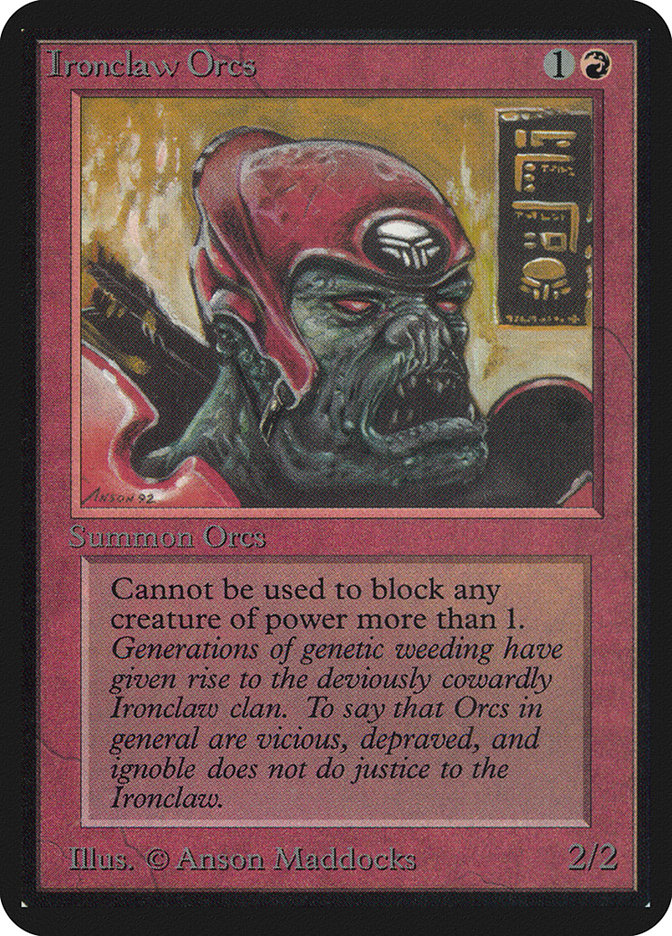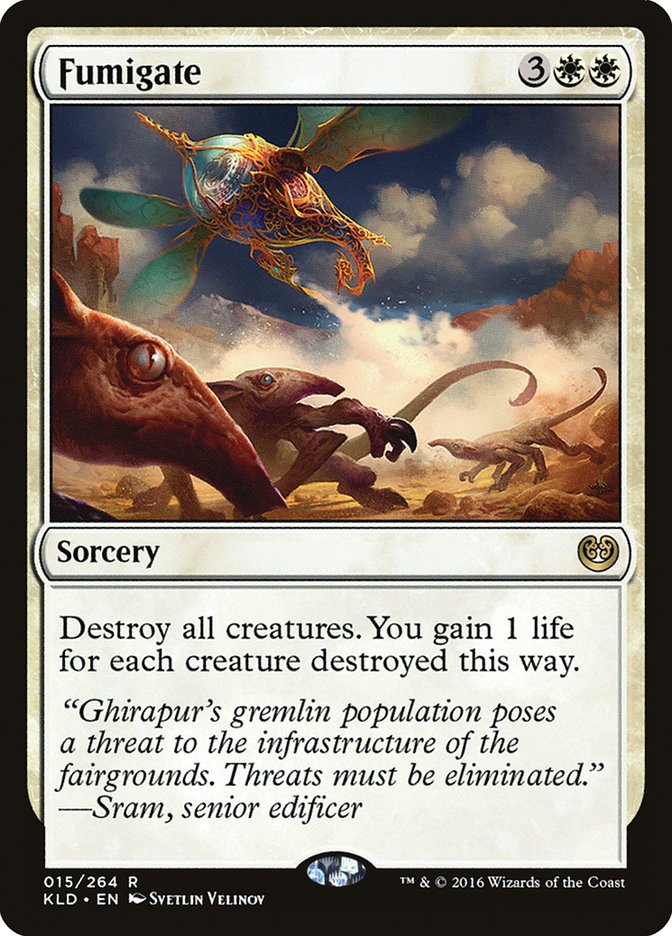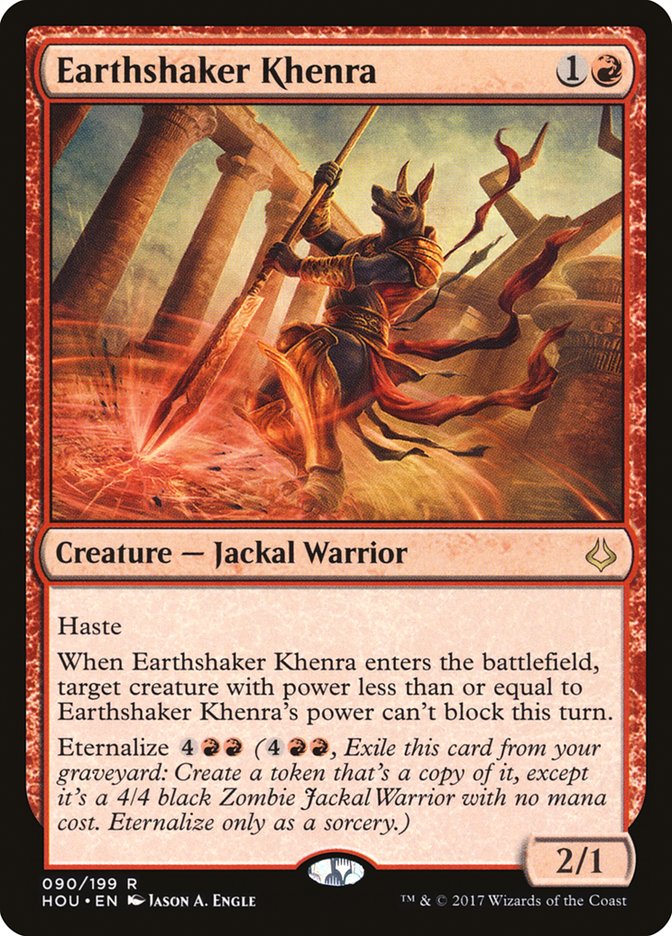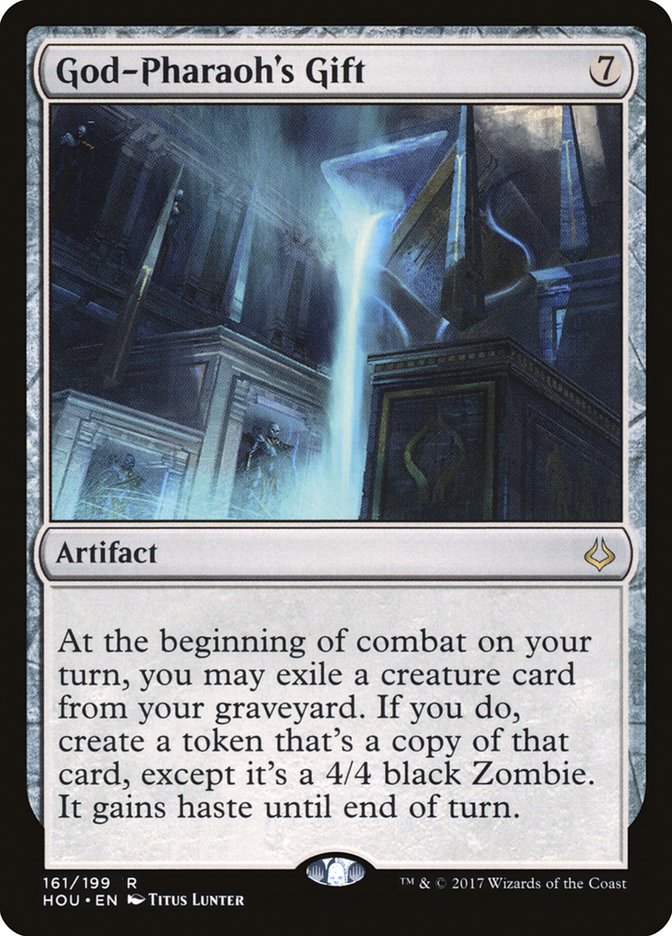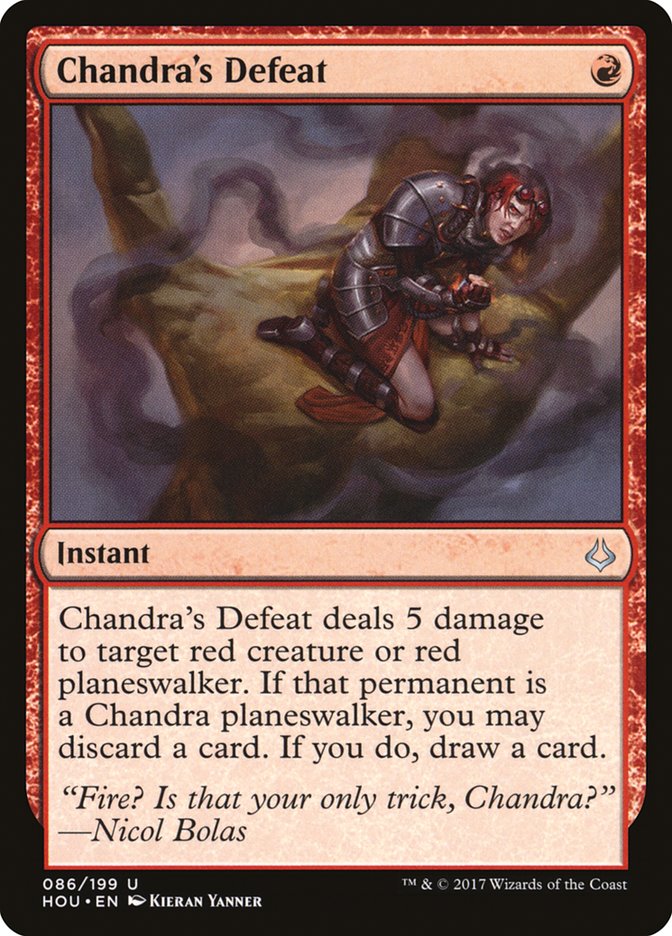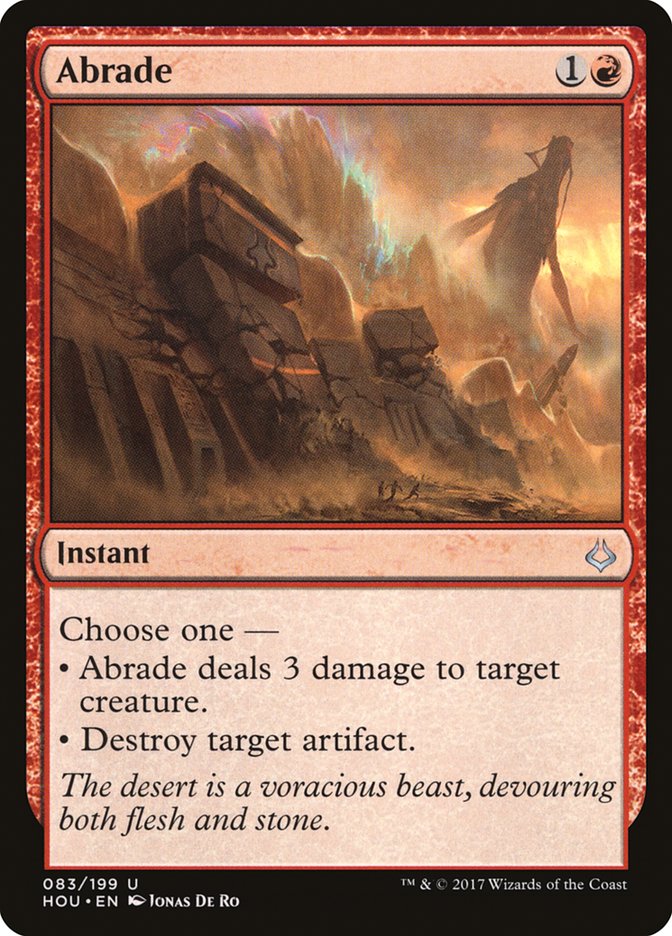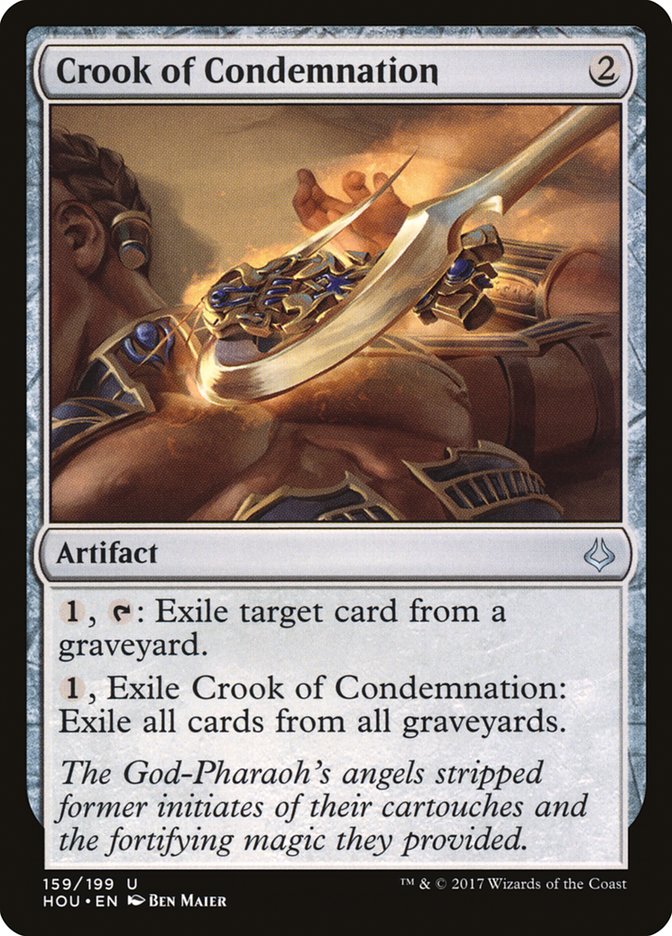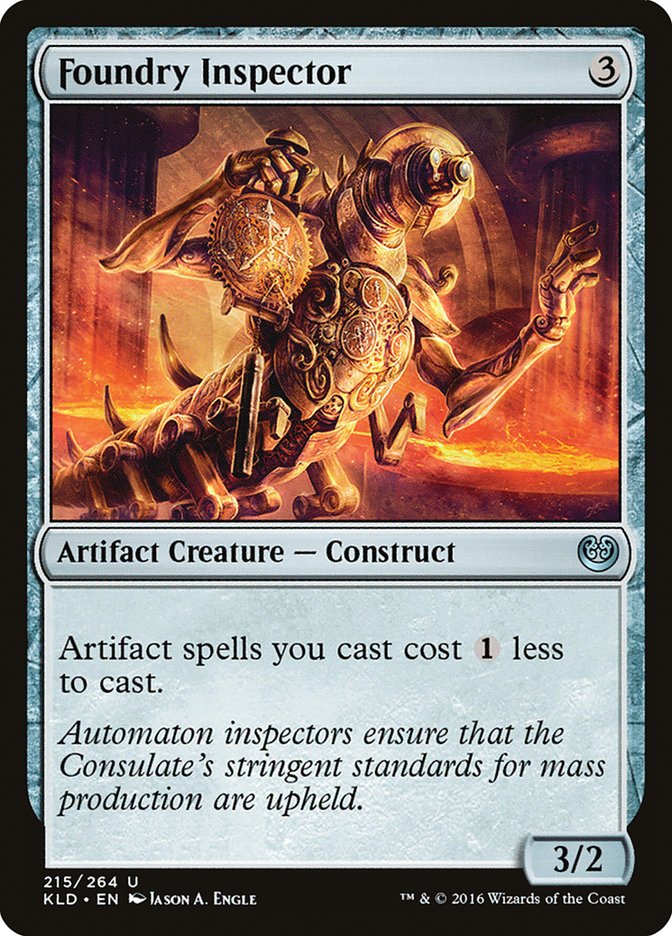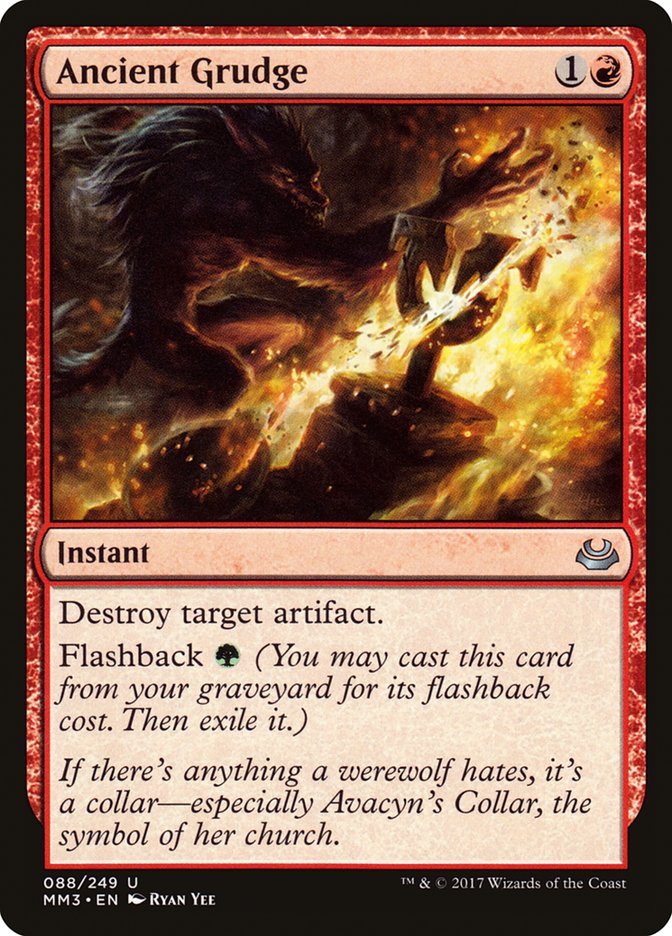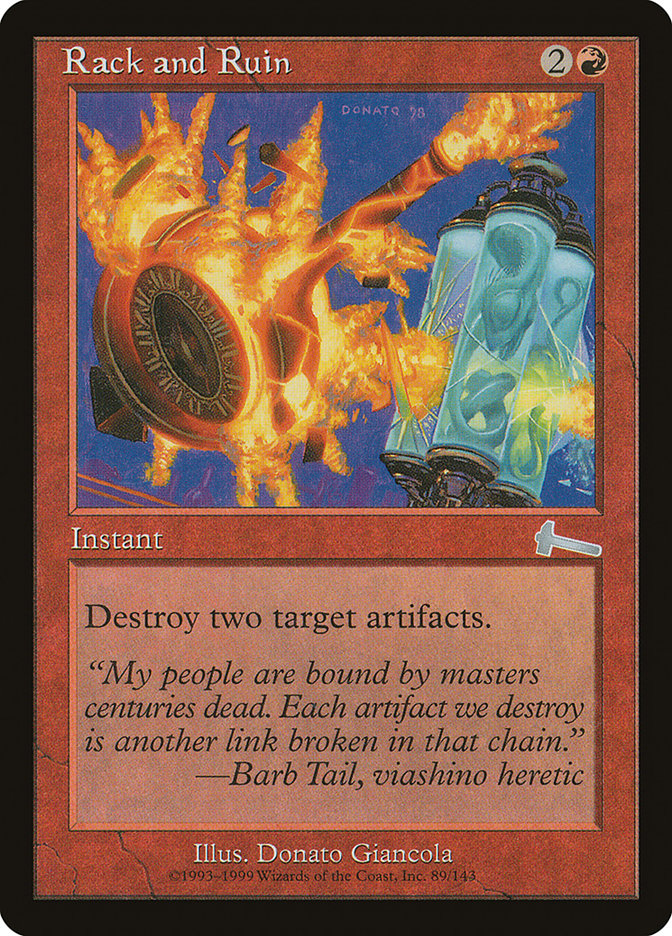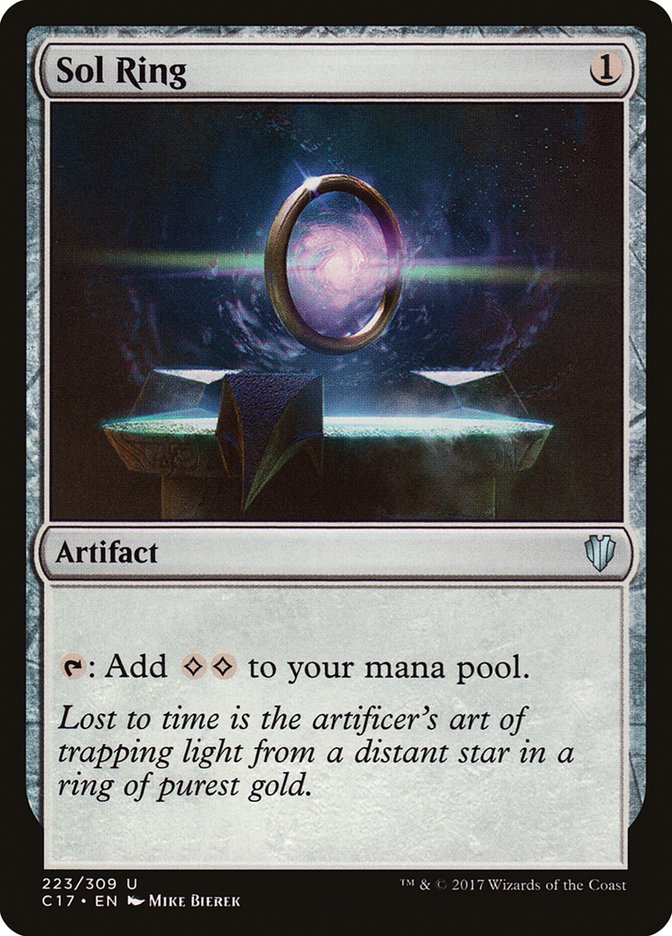To paraphrase a concept that I believe came from Mark Rosewater, one of the best parts of Magic is that it can be one of many different games. Formats are just that: different subgames. Many of the same principles apply, but there’s a touch of uniqueness between them all.
Over the last few months, I’ve been stretching my time across a bit of everything. If you want to improve at any and every major format in Magic, here is my one takeaway specific to it.
Modern: Stop Keeping C+ Hands
A large part of the inspiration for this section is a blog post by Alex Majlaton about Affinity-mastering his way to a Top 16 finish at Grand Prix Phoenix, which was in turn inspired by a blog post by Allen Wu about optimizing your deck and strategy for nut draws.
There are about a million ways to get crushed in a game of Modern. The best way to not get crushed is always show up at the start of each game ready to crush your opponents. Don’t keep hands that can’t do that.
This is most obvious in Eldrazi decks, so I will use the Michael Hughes R/G Eldrazi list from Grand Prix Phoenix to demonstrate. If you want more info on this deck, take a look at the primer from Ben Weitz, who rebirthed it in testing for Pro Tour Rivals of Ixalan.
Creatures (26)
- 4 Noble Hierarch
- 4 Bloodbraid Elf
- 1 Scavenging Ooze
- 1 Endbringer
- 4 Eldrazi Obligator
- 4 Reality Smasher
- 4 Thought-Knot Seer
- 4 Matter Reshaper
Lands (22)
Spells (12)

The following hand is garbage and should immediately be mulliganed:
You aren’t doing anything. No deck folds to Dismember and a Turn 6 kill. You are leaning on the top of your deck to deliver… basically a nut draw.
On the other hand, this is fine:
You have real potential for a Turn 3 Reality Smasher or Thought-Knot Seer. That matters, even if your fourth or fifth land never matters.
In deckbuilding, that means a Modern deck is much more powerful if it can afford to lose a card to a mulligan and still go off, like Tron. The decks that get significantly worse when down a card either need to be extremely consistent, like Jund having a ton of generic good early action into generic good early threats or Storm having a ton of cantrips to make any hand keepable, or those decks need to be insanely powerful, like Affinity, or insanely well-positioned sometimes, like G/W Hexproof.
I want to also state that keeping hands that could be an A+ or an F- is a good plan, as long as you are reasonably favored to “get there.” One-landers that go crazy with a second land are right in this range, as is basically every hand with Hollow One. The entire Snapcaster Mage side of the metagame basically operates in this realm every game, as sometimes a bunch of Lightning Bolts doesn’t matter, but usually they do, and sometimes they have Cavern of Souls for your three counterspells, but usually they don’t.
Legacy: Attack Their Cantrips
Last week, I wrote about playing Turbo Depths in Legacy. This put me right back in my Thoughtseize wheelhouse, which may have been about the only thing I knew how to do with the deck going into it.
As a result of being so used to making people discard, I did miss talking about one thing I discovered. I’m not sure if I learned it, or if I just Thoughtseized as normal and then was shocked when I realized what the sum of my correct in-the-moment decisions amounted to.
I took Brainstorm and Ponder with my discard a lot. I probably should have done it even more.
I’m used to an age of Legacy long gone. You see, prior to the era of Delver of Secrets and Young Pyromancer, people couldn’t actually clock you and have enough interaction. Or maybe it was Flusterstorm and the banning of Sensei’s Divining Top? I don’t know. Regardless, Legacy has turned a corner where you can actually put threats in your deck, back them with some answers, and get there against whatever linear strategy your opponent is presenting.
Or maybe the turning point was people playing Ponder and Gitaxian Probe in fair decks and being able to turn “some answers” into reliably drawing enough interaction to win. There’s a reason Red Elemental Blast was always so scary to me as a Storm player. When you’re trying to cobble together a bunch of specific effects to win the game, being able to select your cards matters, and these days basically every match involving a blue deck is that. Even in mirrors, you need to stop their Young Pyromancer now and then their True-Name Nemesis or Gurmag Angler in a turn or so, yet also not flood out in five turns.
If you get the chance to snipe their Brainstorm or Ponder early, your Delver opponent’s ability to maneuver like this will be crippled. Maybe it will be next turn when they don’t find their answer for your Young Pyromancer, or in three turns when they are left with a bunch of things that answer spells but not creatures. Either way, that creates an opening, and Legacy is all about finding the right opening and exploiting it.
On the flip side of it, that means every cantrip you cast as the blue player is super-important. This has always been true, but back in the day, it was more because Brainstorm flipped dead cards into live ones in the long term and less that Brainstorm was a way to alter what things you have coverage against at some future point. If you don’t need something right now, then “now” probably isn’t the time to cantrip.
Pauper: Realize Pauper Is Legacy
Pauper is probably the major format I have the least raw experience in and the least reason to have played, but I find myself drawn to it. Whenever I’m watching streams, I find myself trying to find the Pauper ones, as the turn-by-turn play in basically every matchup is always interesting.
I’m not sure why this shocked me. Maybe it was the fact that the last times I played Pauper involved Sulfur Vent and Grapeshot, or else Cloud of Faeries and nonsense. But this should be really obvious.
The following cards are all legal in Pauper.
What the heck do you think this format is going to look like?
If you haven’t played Pauper but plan on trying it soon, the best context I can give is the format is like Legacy minus all the combo decks that can kill you on Turn 2, and also minus most of the individual unbeatable cards. You are playing games to dance around specific potential blowouts or to implement some weird strategy that dodges the interaction.
If you like Legacy and miss it being the big non-rotating format Modern is now, you will love Pauper. If you aren’t sure, Pauper is the perfect way to step into that old Magic style of play without needing cards that are marginally attainable at best.
Standard: Understand Which Tempo Matters
If you want to talk about old Magic, oddly, Standard has moved back to something that is a bizarre twist on it.
You see, back in the day, it was basically impossible for your early game to measure up to the big heavy-hitter spells. Your opponent was going to get to Wrath of God you if they had it and it would be horrible. You did your best to play this measured game of not losing everything to the Wrath but still threatening to kill them, but it was never a clean answer the way it can be now.
Nice Fumigate. Eternalize my Earthshaker Khenra and jam with the Hazoret the Fervent that also didn’t die. Great job, welcome to 2018.
But the joke is that the early creatures still don’t really matter these days.
Welcome to Bizarro World. See, the problem isn’t that some spell negates all the work you did, but instead some threat does. Everything you did up to that point doesn’t matter; whoever has The Scarab God is ahead. Like I said a month ago, two- and three-drops mainly exist to support your four- and five-drops that actually matter.
Barring cases of extreme disparity where one player literally does nothing with their first couple of turns to the other person doing something, getting ahead early doesn’t matter.
But tempo still matters in Standard.
Tempo is gained by getting to use a turn mid-game to erase their threat and deploy yours. This might be the biggest issue with Glorybringer: Chandra’s Defeat is just too clean and efficient of an answer. Even actual Chandra, Torch of Defiance gets something out of the exchange if you minus it, where Glorybringer never gets to attack.
The example I want to talk about is Abrade against W/U God-Pharaoh’s Gift. Even though it looks like a good answer to Refurbish, it often backfires. Leaving up two mana costs you too much when the relevant threats cost four or five, and again, trying to lowball them fails because Angel of Invention erases all of your early advantage.
So even though it seems like the most tempo-efficient thing would be to trade your two-mana answer for their four-mana sorcery, it isn’t. The real tempo in Standard is represented by how many four- and five-drops you have deployed and established, and a Duress or even spending an early turn on Crook of Condemnation to stop their setup is the play that gives you that.
Draft: Stay Open
Time for my rant about kids these days and Limited…really, not kids, basically everyone.
It makes sense that people have adjusted how they approach Draft, given how little it matters these days. You basically are only drafting if you are at Friday Night Magic and nothing matters, or else at the Pro Tour, where everyone is drafting twice and never drafting again.
But wow, the way people talk about the format makes everyone worse.
It feels like every set people are hyping an archetype as “the big, best thing to do.” This isn’t how you win at Draft. You will win more in Draft where you can find these cards, but what about the times you can’t? Random distribution is a thing. Other people drafting that archetype is a thing.
Draft is about knowing about archetypes like this, and then more. It’s about knowing that if you’re U/W or U/B, picking up Sailor of Means and Sun-Crested Pterodon and splashing is great, but that isn’t even going to cover half of your drafts. What’s your plan when someone next to you drafts blue? Have half a deck and lose?
Draft is about knowing that when you can’t draft Sailor of Means, you need to have lots of ways to punch through large creatures in B/R Pirates so your 3/3s matter. Or that your Merfolk deck needs multiple high-rarity payoffs to be great, so taking that Merfolk Mistbinder early is fine but moving in off random Merfolk late Pack 1 isn’t.
Even in Khans of Tarkir, when “the archetype” of Five-Color was redundant across fifteen commons and five uncommons of fixing, a ton of multicolor payoffs, and a format where basically any morph did the trick… knowing how to draft all the enemy-pair aggro decks was important.
Sealed: Play Your Mind Rots and Raise Deads
Short and sweet for the format people probably want to think the least about.
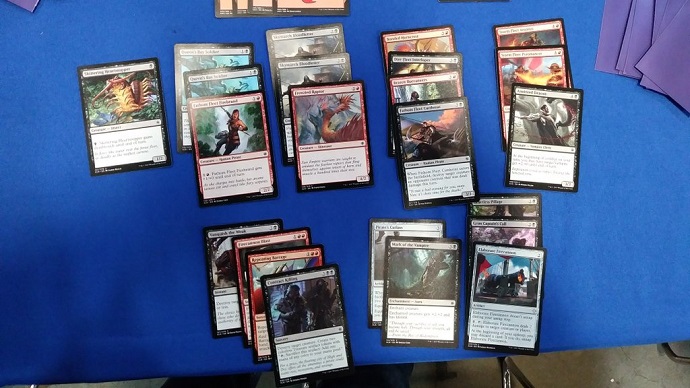
Look at this at least C+ grade photo of a C+ Sealed deck I managed to go 7-2 with at Grand Prix New Jersey last year. Look at that… Grim Captain’s Call? Elaborate Firecannon? Heartless Pillage?
In Sealed, it’s really easy for a card that is always a C to be outclassed. You cast Grizzly Bear, they cast Hill Giant, you cast another Grizzly Bear, and now none of those cards matter. Often one or two high-impact cards alone matter, hence the general assumption Sealed is all about bombs. You need some amount of random creatures to not be dead, but past the minimum, they aren’t adding a lot.
So instead of playing that sixteenth random creature with power and toughness that doesn’t really fill out your curve anywhere, play a spell that might actually have the impact of a high-tier card: the discard spell that hits their rare, the Raise Dead that is a second copy of your best card, or just the weird grindy card like Elaborate Firecannon.
Vintage: Quit Playing Versus 2018 Shops Like It Is 2013
- Alternate Mistake 1: Not Playing Vintage
- Alternate Mistake 2: Not Buying Moxes Last Century
Now for 90% seriousness.
These are all cards that were Vintage-playable, in the sense that Mishra’s Workshop let you cast them and you needed basically any way to win the game. I have memories of twenty-turn games where the Workshop player had assembled five Thorn of Amethyst and Sphere of Resistance and was racing to find any of their twelve ways to win the game before their opponent found literal lands.
Then Wizards of the Coast restricted two of the best lock pieces…
…and printed Kaladesh block.
It turns out that Walking Ballista for large numbers kills people very quickly, and “large numbers” includes Arcbound Ravager plus Hangarback Walker situations.
The difference is subtle as killing artifacts is still good, but your mana is less absolutely strained in exchange for just having less time before you die. That means slightly more expensive but harder-hitting answers are what you want to be doing.
You also need to approach Shops like an actual aggro deck full of very capable threats if you aren’t a combo deck. They can kill you with Hangarback Walker, Walking Ballista, Arcbound Ravager, and Steel Overseer in ways that outclass all average threats from your deck. You need to be able to answer all of those.
You can’t afford to skimp on answers. You need something like Swords to Plowshares to cover Hangarback Walker, and you need to not lose on the exchange to Walking Ballista or Arcbound Ravager. I don’t have a clear path to all of this at once, but that’s what you have to do.
Shops is probably still the best deck by miles, but you gotta try, right?
Commander: Sol Ring Isn’t Fun
No better way to end this than the coldest hot take possible.
Don’t cast Sol Ring on Turn 1. No one is having fun there besides you. Consider just playing as if it had the Serra Avenger clause and wait a bit. It might even be tactically right in terms of winning the game to get ahead without getting too far ahead.
If you aren’t really doing anything big, consider not putting Sol Ring in your deck. The games are honestly better that way.
Mana Crypt is also Sol Ring.
The ship has long sailed on any sort of “ban or don’t ban it” argument, but the least you can do in the name of the format of more fun is, you know, try to let people have more fun.


